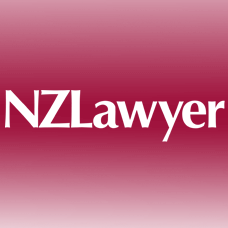Why our banks are safer than US banks
The shocking events of the last week on global financial markets have forced many savers in New Zealand to question the safety of their banks. This nervousness is only natural when well known and apparently impregnable institutions such as Lehman Bros, Merrill Lynch and AIG disintegrated in a cloud of toxic debt and investor panic within days.
But experts say our banks are much stronger, much better regulated, much simpler and much cleaner than the US investment banks that either collapsed or were bailed out in the biggest financial crisis the world has seen since the great crash of 1929. See our 10 reasons why our banks are different from theirs.
“They have got quite a lot of capital and last year they generated a combined NZ$17 billion of profit, so they have a lot of capacity to absorb losses,” said David Tripe, the director of Massey University’s Centre for Banking Studies.
“Also, the majority of their business is lending to business people and home owners and that’s not such a risky activity,” said Tripe.
Analysts and regulators say New Zealand bankers are a boring but conservative lot compared to the ‘Masters of the Universe’ that ran the likes of Lehman Bros and AIG from Wall St and Canary Wharf. These investment bankers in New York and London dreamt up fancy derivatives that few investors understood. They sliced up bonds into so many slivers that lenders didn’t know who they had lent to or over what security. They then insured these bonds so they appeared risk-free.
“While New Zealand will inevitably feel the effects of major financial shocks such as this, New Zealand banks are not involved in the sort of complex financial transactions that have caused significant losses in many of the large global institutions,” Reserve Bank Governor Alan Bollard said in a statement issued on Friday reassuring savers about the strength of our banks.
The Australian banks that own our main banks will, however, not escape completely unscathed from the credit crunch.
They have about NZ$500 million of loans with Lehman Bros and it’s not clear how much they have lent to AIG and others that may fall over. They also face potential losses from the financial problems hitting Australian investment firms Allco, MFS, Babcock and Brown and Centro.
In New Zealand, the banks are likely to see some loans go bad in the property market, but analysts say the biggest risks were taken by finance companies and any losses won’t be big enough to reduce reserves much.
“New Zealand banks appear to have largely learnt from the painful lessons taught by the 1987 crash and do not appear to have got themselves massively exposed to the parts of the property market that are currently imploding,” said Strategic Risk Analysis Managing Director Rodney Dickens, who analyses the economy and property market for companies and local government.
“The most worrying speculative bubbles this time around are not the commercial property market or the housing market, but the apartment market and various bits of the land market, including coastal and resort subdivisions,” said Dickens, who is a former ASB Group Strategist.
“The banks will have to make some provisions for the property market and for their exposures to Lehman, AIG and others, but the exposures and potential write-offs do not appear to be overly worrying when considered in terms of the size of the balance sheets of the banks.”
Lay of the land
ASB – Owned by Australia’s Commonwealth Bank of Australia, this Auckland-based bank has grown quickly over the last decade and has the highest proportion of mortgages of the major banks. It has NZ$59.35 billion of assets and has tier one capital (the safest type of capital required by the Reserve Bank) of 9.3%, which is more than twice the Reserve Bank minimum of 4%. It is AA rated.
BNZ – Owned by National Australia Bank, the AA rated BNZ is seen as one of the more conservative lenders with NZ$60.24 billion of assets and tier one capital of 7.9% of assets. NAB has already written off much of its exposure to US sub-prime mortgages.
ANZ and The National Bank – Owned by the AA rated ANZ Banking Group in Australia, the combination of the two banks is New Zealand’s largest with NZ$114.9 billion in assets and a tier one ratio of 7.7%. ANZ has already increased its provisions for higher bad debts because of a slowdown in the New Zealand and Australian economies.
Westpac – The AA rated New Zealand arm of the Australian bank has NZ$51 billion of assets and a tier one ratio of 6.5%. Westpac’s Australian arm has been least exposed to US sub prime losses and problem Australian loans.
Kiwibank – The AA minus rated bank is part by the government-owned NZ Post. It has NZ$7.2 billion of assets and a tier one ratio of 8.3%. NZ Post guarantees deposits in Kiwibank, although it has the right to withdraw the guarantee with 3 months notice.
This article has kindly been republished courtesy of interest.co.nz. To view this article and other news updates from
* This article was also published in the Herald on Sunday.
Posted: 7 Nov 2008
News articles
Browse articles
by date


